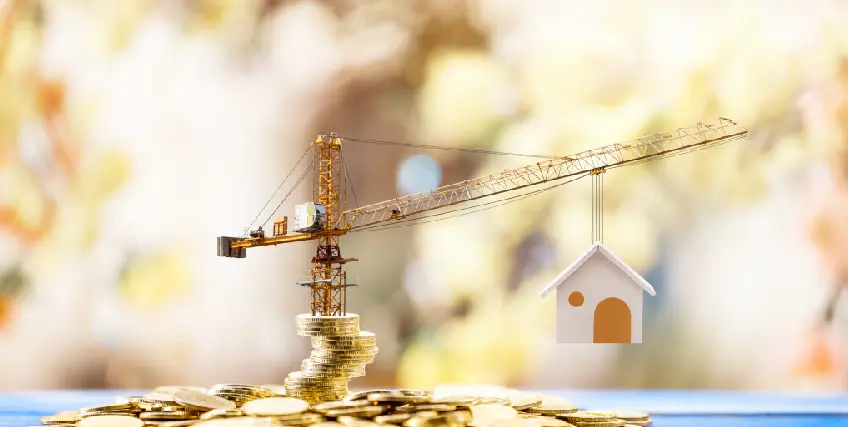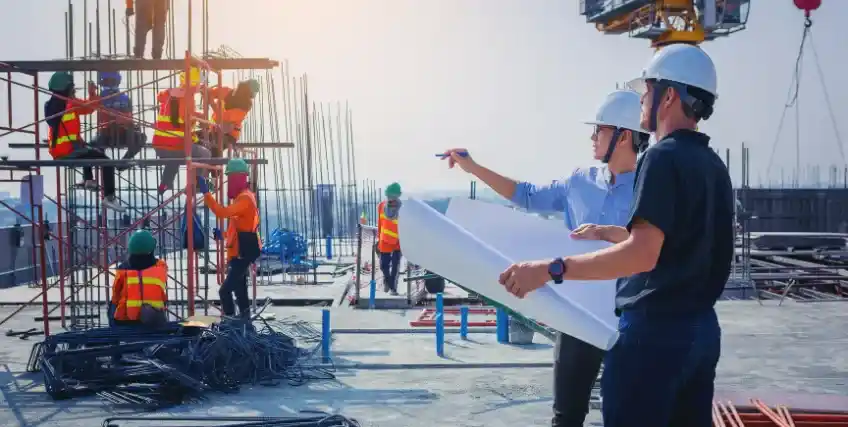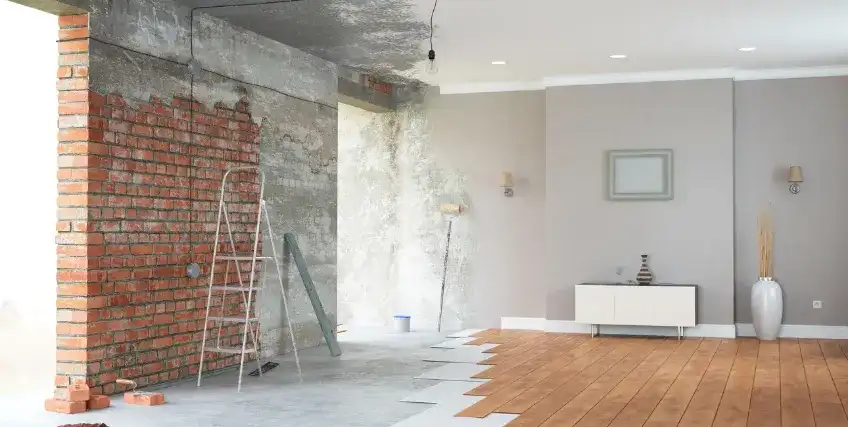How Rising Construction Loan Interest Rates Impact Your Building Budget
August 21, 2025 | Last Updated on: August 21, 2025

In today's dynamic real estate and construction landscape, the subject of construction loan interest rates has taken center stage, influencing every aspect of project development and delivery.
As rates continue to fluctuate due to global economic factors, regulatory decisions, and market demands, anyone planning to build a new home or modify an existing home, a multifamily residence, or a commercial site, needs to understand the financial implications.
Rising rates do not just affect borrowing costs in isolation; they ripple through materials, labor, project timelines, and the overall building budget.
Understanding Construction Loan Interest Rates
Construction loan rates of interest are charges made by lenders to borrowers for lending money to build new properties. Unlike the traditional mortgage loan that disburses a lump amount against a completed property, construction loans disburses money in phases as a function of the project milestones.
They typically have flexible terms structures, wherein construction loan interest rates are reset at predetermined periods as a function of changing market levels or base rates like the Prime Rate. This flexibility implies that borrowers have to be careful: a development that starts at a low construction loan interest rate may find that its costs inflate considerably should market rates rise during its completion.
How are Construction Loan Rates Set?
It is extremely important to know how interest rates on construction loans are calculated. Lenders take into consideration several determinants:
- Borrower's Credit Profile: The higher the credit score, the lower the rate, as the borrower is less of a risk.
- Project Risk Factors: Long-duration, complex, or high-dollar projects may have higher rates based on increased risk.
- Loan-to-Cost Ratio (LTC): Lenders normally finance 60% to 80% of the cost of projects. Borrowers with more down payment are usually in a position to negotiate lower rates with the loan officer.
- Economic Environment: Central bank actions, inflation, and macroeconomic volatility are major drivers of base rates.
- Loan Term: Construction loans of shorter duration carry higher rates to reimburse the lender for taking the risk for a shorter period.
- Type of Construction: Whether the site is residential, commercial, or mixed-use also has an impact on the rate offered.
The Costs of Rising Construction Loan Interest Rates
Below are the construction loan interest rates and rising costs:
Increased monthly and total project costs
As construction loan interest rates rise, so does the amount pay during construction. Construction loans differ from regular mortgages since interest payments are only on the amount borrowed at each stage. But as rates rise, whether it's a small jump or not, the added costs pile up by the time the project is completed.
Shrinking budgets and affordability challenges
Paying for a new building becomes much more complicated in the case of rate hikes. Borrowers qualified for a certain sum may discover that, with higher construction loan interest rates, the potential scope of their project is scaled down, and they have to do away with luxuries, relocate to a smaller house, or even delay building. For some, it may be opting for a smaller residence or even a different commercial structure altogether.
These construction loan interest rates particularly harm the new home builders or those building on thin margins. Contractors now spend a larger portion of their budget on finance charges, shortchanging money for quality materials or specialized subcontractors.
Material and labor cost escalations
The effect of rising construction loan interest rates is rarely limited to loan options. With borrowed capital becoming more expensive, suppliers and builders of building materials incur higher finance charges, which are passed on to customers at elevated prices.
Labor can become more expensive as well since contractors pay contractors more to help cover their own cost-of-living and financial difficulties.
Lending environment tightening
Rising rates tend to signal lender conservatism. As rates go up, banks and other financial institutions will tend to tighten their loan standards, reducing the maximum down payments, requiring more documentation, and even capping the maximum loan-to-value percentages available.
The result is a discriminatory lending environment where only the best-qualified and most well-capitalized borrowers can borrow money on competitive short-terms.
Projects that looked feasible earlier, lower construction loan interest rates may become non-viable, leading to moderation of building starts and a shift in market dynamics.
Construction Loan APR: The True Measure
While raw construction loan interest rates are a headlining number, smart borrowers look beyond those numbers to the construction loan APR (Annual Percentage Rate). APRs encompass not only the underlying construction loan interest rates but also all the fees that are obligatory, origination, appraisal, processing, and even inspection fees from time to time, providing a balanced view of the cost of borrowing.
For instance, an advertised low rate can be misleading when the APR behind it is driven by unequal fees or penalties. Comparing loans in terms of APR enables customers to give more accurate cost estimates and prevent building budgets that are diverted by unexpected costs.
Current Construction Loan Rates in 2025
Following a couple of years of monetary tightening and inflationary pressures, the rates of construction loans in August 2025 are reflective of international and domestic economic pressures.
In the US, common building loan rates are different, with some providing very competitive options to well-qualified consumers who have excellent credit and make large down payments.
Business and commercial building loan rates are usually higher, though SBA business construction loans tend to offer more favorable terms to very qualified applicants.
The lowest construction loan rates available are typically reserved for borrowers with a low-risk profile, good financials, and significant amounts of capital to invest in the project. Special promotional offers and time-sensitive specials may dip below these averages, but they are rare and come with unfavorable terms.
Business Construction Loan Rates vs. Residential
Business and commercial construction loan rates are higher than single-family dream home residential loans due to perceived risk and the size of commercial businesses. Commercial rates vary by location, type of property, business cash flow, and overall economic outlook for the sector. Business owners are often required to meet stricter qualification standards and pay more in expenses as a result.
Lenders frequently calculate construction loan APRs differently for business loans, too frequently tacking on additional underwriting and attorney fees. As rates rise overall, the difference between commercial and residential expenses widens further, making it even harder for big commercial projects to pencil out financially.
Budgeting Strategies Amid Rising Interest Rates
If you want to budget your construction loan interest rates in a better way, you should follow these steps:
Locking in rates early
Where there is a rising rate scenario, timing is critical. Borrowers who can "lock in" the rate before subsequent increases gain greater budget certainty. Some lenders include the ability to "float down" the rate if market conditions subsequently improve before loan drawdown, allowing some flexibility.
The facility is most useful on large or long-duration projects where fluctuations in the market over the construction period can have a material impact on the cost of funds.
Increasing equity contributions
Higher down payments or putting in more equity will, in some cases, allow for lower construction loan interest rates to be negotiated, reducing the lifetime cost of borrowing. Small spreads over the prime rate will also be granted by lenders on "safer" loans, which will offset the impact of rate hikes.
Reevaluating project scope
Both lenders and contractors usually mitigate increasing construction loan interest rates through reconsidering project scale, employing substitute materials or methods, phasing construction work, or holding cash for unforeseen spending. Such elasticity is the distinction between a successful building project and an overspend.
Rate comparisons and shopping around
With such broad differences in products and qualifying conditions, it is wise to compare shop construction loan rates and construction loan APRs among multiple sources. Reputation of the lender, timeliness in closing, and flexibility in disbursal may also exert disproportionate influences, especially in the current volatility of construction loan rates.
Long-Term Impact: Beyond the Construction Phase
Long-term impact of construction loan interest rates:
Permanent construction financing and project viability
For construction loans to permanent mortgage transition structure projects, higher construction loan interest rates now can equate to higher fixed charges over the building's lifespan. Budgeting must include potentially greater repayment upon stabilization of the site and the conversion of the construction facility to an outright mortgage.
Certain financiers will delay or hold back on building if long-term projections are no longer feasible, not just affecting individual builders but possibly curtailing the supply of new housing or business space.
Affordability and development slowdown
Wider economic effects include decreased affordability for end buyers and a reduction in the number of new constructions starts, especially in cost-sensitive markets. This tightening can depress economic growth in related industries, slowing job creation and innovation in the construction sector.
Also Read: What Is New Construction Financing and How Does It Work?
Conclusion
The relationship between construction loan interest rates and your building budget is deep and complex. As rates rise due to economic, regulatory, or market-driven reasons, every stage of the construction process is affected, from loan approval and material orders to hiring and final build-out. Understanding not only the headline rates but also total costs as reflected in the construction loan APR is essential for sound planning, cost control, and project viability.
By keeping a close eye on current construction loan rates and actively adopting smart borrowing and budgeting strategies, both individual and corporate builders can make informed decisions, weather market volatility, and bring their projects to fruition without compromising on quality or financial security. For those seeking the lowest construction loan rates, a strong financial profile, higher home equity loan contribution, and diligent lender comparison remain the best tools in a challenging landscape.
FAQs About Construction Loan Interest Rates
How do interest rates affect construction costs?
When construction loan interest rates rise, it is more expensive to borrow, impacting developers and general contractors that leverage construction loans to directly fund projects. The majority use credit lines or a credit union loan to fund cash flow throughout the project, typically making interest-only payments until the project concludes. As rates rise, it contributes to the overall loan and makes lenders more reluctant to offer favorable terms, which contributes to total construction costs.
How do interest rates affect the budget?
Interest rates regulate consumer and business spending levels. When rates increase, monthly payments on mortgages, construction loans, and other financing also increase. This forces consumers and businesses to allocate their money into more debt service and less on other expenses, which can have an effect on retail prices. Having a good balance in a checking account is necessary when working with variable expenses.
How do rising interest rates affect property values?
The borrowing cost has a direct impact on property demand. As interest rates increase, there are fewer first-time purchasers who can qualify for mortgages or construction loans, reducing demand and potentially property prices. Developers must consider this when they are calculating the final loan amount and sales projections.
What impact do rising interest rates have?
Lower interest rates make borrowing cheaper, encouraging spending that can lead to inflation. Higher rates make saving more appealing, reduce spending across the economy, and put downward pressure on prices.
Is construction loan interest a soft cost?
Some common soft costs for multifamily developers include architectural, planning, and engineering fees; legal fees; permits; taxes; insurance; and construction loan application process or origination fees. Construction period interest, typically in the form of interest-only loan payments, is also a soft cost. Knowing exactly how construction loans work helps developers budget accurately and manage direct and indirect expenses.
Frequent searches leading to this page
Related Articles
Navigating the Challenges of 0% Down Construction Loans: What Borrowers Should Know
October 16, 2025
Navigating New Construction Loans: Financing Your Business Build
September 30, 2025
How to Choose the Best Construction Loan Lender for Renovation Projects
September 11, 2025
Term Loans are made by Itria Ventures LLC or Cross River Bank, Member FDIC. This is not a deposit product. California residents: Itria Ventures LLC is licensed by the Department of Financial Protection and Innovation. Loans are made or arranged pursuant to California Financing Law License # 60DBO-35839




